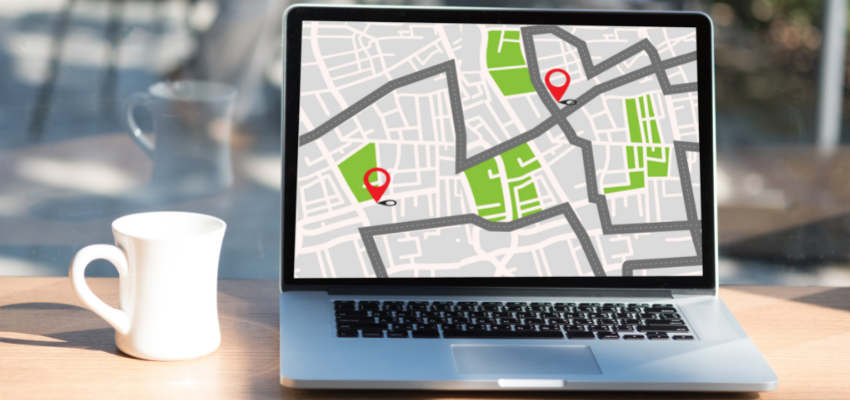Show:
Exploring Location-Driven Marketing: Best Practices and Mistakes to Avoid
With the evolving world of digital marketing, businesses are always looking for different ways to reach their target audience effectively. With mobile devices available to almost everyone, location-driven marketing has become a powerful tool.

In this article, we will talk about location-driven marketing, the best practices you can follow to increase your customer engagement, and common mistakes you should avoid.
How Businesses Can Use Location-Driven Marketing?
Businesses can use location-based marketing to target customers more precisely and personally. A simple text message or email based on where someone is is what location-driven marketing really is.
Also, the marketing teams can target customers based on specific factors, such as how close they are to a store, attending local events, and more.
Advantages of Location-Driven Marketing
The reason why location-driven marketing is increasing in popularity day by day in the world of digital marketing is because of the various advantages it has to offer. Which are:
1. Increase Revenue through Tailored and Personalized Marketing Approaches
Although statistics show otherwise, businesses frequently aim to make their advertising and marketing campaigns as appealing as possible. Nearly 40% of consumers who get messages from businesses believe that the communication could have been more relevant and helpful, per an analysis of mobile marketing.
For example, getting texts about clothes when looking for groceries can be pretty irritating. Here’s where location-based advertising can make a difference. By using customers’ location data to make sure they are only ever sent relevant content, location marketing raises the stakes in the marketing game.
Though there are other options, Google Local Inventory Ads is the most popular example of location-based marketing in e-commerce.
2. Boost Immediate Foot Traffic
If you are a business owner, attracting customers with lucrative offers and sales can be a fantastic way to boost your business foot traffic. This eventually increases the number of customers who view your business page, increasing audience engagement.
3. Improve the User Experience
You can give customers greater user satisfaction by focusing on them when they are most likely looking for your services. Before committing to ad spending, as with any marketing investment, assess your target audience and significant external factors to determine how location-based marketing strategies will impact return on investment.
For example, an ad based on food that is available nearby would be accepted by customers when they are on a restaurant app. If you can put in some deals with it, that would be the icing on the cake.

Best Practices to Follow in Location-Driven Marketing
While people do location-driven marketing in different ways, it is essential to follow some practices that will boost your audience targeting and engagement. Here are some best practices to follow.
1. Be Sure to Get Consent from User and Respect their Privacy
Before you implement any location-driven marketing strategy, you must obtain consent from the user. Although this might not always be a legal requirement, it indeed is an ethical consideration to let the users know how their location data will be used and get their consent regarding it. Assure them that the privacy of their data would be your top priority. These practices will help build your customer trust.
2. Don’t Just Spam, Be Valuable
The main idea of location-driven marketing is that it will be valuable to the customer and will not be irrelevant. Create genuinely helpful, exciting, engaging, or informative content based on the user’s location.
For example, a food app could suggest the most common food items available or local dining options in that particular user area, making the content both valuable and relevant. This will create a positive user experience, thus enhancing your audience engagement and brand value.
3. Use Beacons and Geofencing Strategically
It has been demonstrated that geofence marketing boosts engagement, revenue, and client loyalty. With geofencing marketing, marketing teams can target the delivery of their content and ads based on the specific location they are targeting.
A target location’s physical boundaries are called its “geofence.” It could be a postal code, city, country, or a few-kilometer radius around a physical store. Setting up different geofenced marketing channels is also an option for companies with several locations. Marketers can establish a stronger connection with the residents of those areas by using geofencing.
Beacons are networked devices that connect to preset applications running within a beacon’s range via Bluetooth or WiFi. Beacons are an effective tool for focusing on current clients in a constrained geographic area. To activate beaconing, your device must send a signal to a server, instructing it to send information to it.
This could come in the form of an email or push alert. Let’s say you are in a sports arena and suddenly receive a notification offering deals! That’s the kind of magic you want to create with location-driven marketing.
4. Opt for Mobile Targeting
This is known as mobile targeting, when advertisers target customers with mobile ads on their devices. Ads should be context-specific, depending on time, location, or device, as most consumers prefer to avoid advertisements.
Using mobile targeting in the mobile ad system involves creating segments that specify who you would like to advertise to and the criteria you want to use to find them (e.g., whenever they enter a specific area or are near your store).
For a more individualized experience, marketers can focus on users directly on their devices with this type of location-based mobile marketing. Employing a more targeted approach, marketers frequently see higher returns on their advertising spending.
5. Use Customer Insights with Location Data
Combining location data with customer insights can have a vastly impactful effect on location-driven marketing.
Focusing on location is not good enough, but combining it with your audiences’ purchase and browsing history will give you a much clearer idea of what they really want. With this integrated strategy, you can create highly targeted and personalized ads that fit into the context of each user’s interaction with your business.
6. Opt for Cross-Channel Consistency
Marketing channels need to be consistent for the customer experience to be seamless. Regardless of how customers interact with your company through email, social media, or in-store interactions, make sure location-driven communications align with your entire brand identity and messaging. Cross-channel consistency maximizes the effect of your location-based marketing by building trust and brand recognition.
7. Classify Your Audience Effectively
All users will not require the same information. Different audiences will have different needs and preferences. Segment your audience based on their previous online activity to make your location-driven marketing more effective. This will allow them to receive more relevant content, thus building audience engagement.

Common Mistakes to Avoid in Location-Driven Marketing
There are a lot of common mistakes that can make your efforts on your business location-driven marketing futile.
1. Avoiding Interaction with the User Interface
Did you ever try using your own campaign? The user experience (UX) and creating strategies to improve it for consumers are essential to marketing initiatives.
Engaging with your campaigns is one of the simplest and least expensive methods to improve the consumer experience. View it from your perspective. Do you like it? If you do, chances are high that your target audience would like it, too.
2. Overwhelming Consumers with Too Many Ads
Do you know how frustrating it is to see three different ads pop up while ordering something online? When focusing on a certain area to target, it’s simple to expose clients to the same advertisement repeatedly.
Remember that most prospective customers view hundreds of advertisements daily, so making an impression is a must. Over-exposing your campaign might detract from your marketing efforts by making your advertisements interesting and varied. Users may begin to ignore a company’s messages and promotions if they consistently receive them.
Frequency capping offers a way to counteract this overexposure. It is an easy and efficient technique to cap advertisements that ensures your clients aren’t constantly exposed to the same ad material. Frequency capping should be applied to all your efforts, as these campaigns can range from location-based email marketing plans to banner ads.
3. Using Information from Out-of-Date Client Lists
Are you sure you are not sending these marketing texts to clients who have moved out of their previous homes? You must keep your target audience list updated. Otherwise, it won’t benefit you or the customer if they are not in the targeted location.
By examining consumer behavior within your predetermined criteria, information can be used to inform marketing strategies. This data can then display ads to the most suitable target audience. However, it’s important to keep in mind that consumer behavior is always changing. I like gaming one week and then fashion accessories the next!
To ensure your marketing plan adapts to your customers’ shifting needs, avoid examining data from out-of-date customer lists. Relying on outdated data can result in better-targeted marketing efforts, and you want to make the most of your advertising revenue.
4. Lack of Trained Staff
You might have cracked the location-driven marketing strategy, but do your staff know how to use it? It is more important if your company has a physical presence and can offer discounts and special offers to clients who “check in.”
You want reward trade-offs and check-ins to be as easy and efficient for your customers as feasible. When a staff member is in the sales department and needs to learn how to use a coupon, it can be unpleasant. Giving it their training is your best chance of winning this.
As you modify the check-in system, periodically consult with your staff and let them know how important location-driven marketing is to your company. It will be simpler for them to guide and assist consumers if they fully understand the idea.
Setting up an app for the sales team is one way to stay informed about how well your employees use the system and track their success. This will guarantee that any knowledge gaps are closed and easily tracked using tools like Slack or an employee handbook. With more operations happening online, it could be a good idea to use a digital handbook builder to produce a staff digital handbook.
Conclusion
Location-driven marketing is a dynamic and effective technique to communicate with your consumers in a highly targeted manner. If businesses follow best practices and avoid typical traps, they can use location data to give customers tailored, relevant, and engaging experiences.
As technology advances, incorporating location-driven methods will likely become increasingly more intricate, offering businesses additional opportunities to interact locally and personally with their audience.

 Return to Previous Page
Return to Previous Page








